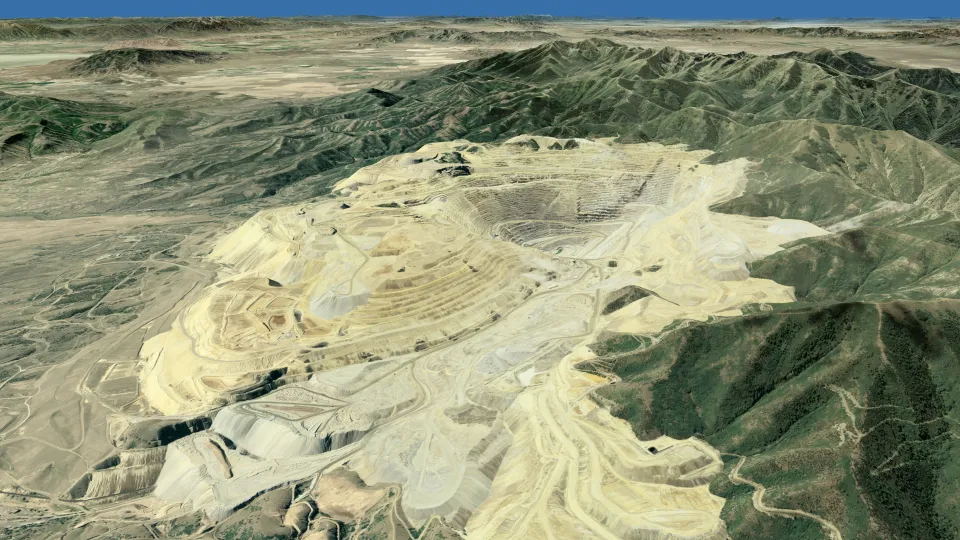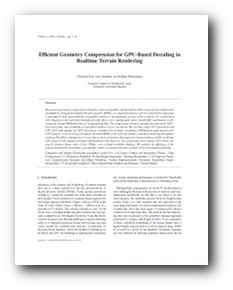Efficient Geometry Compression for GPU-based Decoding in Realtime Terrain Rendering
Christian Dick, Jens Schneider, Rüdiger Westermann
Computer Graphics and Visualization Group, Technische Universität München, Germany

Background
We present a geometry compression scheme for restricted quadtree meshes and use this scheme for the compression of adaptively triangulated digital elevation models (DEMs). A compression factor of 8-9 is achieved by employing a generalized strip representation of quadtree meshes to incrementally encode vertex positions. In combination with adaptive error-controlled triangulation, this allows us to significantly reduce bandwidth requirements in the rendering of large DEMs that have to be paged from disk. The compression scheme is specifically tailored for GPU-based decoding, since it minimizes dependent memory access operations. We can thus trade CPU operations and CPU-GPU data transfer for GPU processing, resulting in twice faster streaming of DEMs from main memory into GPU memory. A novel storage format for decoded DEMs on the GPU facilitates a sustained rendering throughput of about 300 million triangles per second. Due to these properties, the proposed scheme enables scalable rendering with respect to the display resolution independent of the data size. For a maximum screen-space error below 1 pixel it achieves frame rates of over 100 fps, even on high-resolution displays. We validate the efficiency of the proposed method by presenting experimental results on scanned elevation models of several hundred gigabytes.

Associated publications
Efficient Geometry Compression for GPU-based Decoding in Realtime Terrain Rendering
C. Dick, J. Schneider, R. Westermann, Computer Graphics Forum 28(1):67-83, 2009
[Bibtex][PDF]
Videos
- Utah [95 MB WMV]
- USA [111 MB WMV]
For a high-resolution video, please also see our more recent paper "GPU-Aware Hybrid Terrain Rendering".